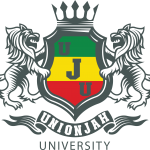Title : Emperor Haile Selassie I in Trinidad & Tobago
By UnionJah Observer | April 29, 2025
Haile Selassie I in Trinidad & Tobago: Africa Meets the Caribbean
“From Africa’s mountains to the Caribbean’s islands, our destiny is one.”
Date of Visit: April 1966

- Location: Port of Spain, Trinidad
- Host: Prime Minister Dr. Eric Williams
- Occasion: Strengthening Ethiopia–Caribbean relations
Significance of the Visit
Haile Selassie’s visit marked the first time an African monarch had come to independent Trinidad & Tobago, only four years after its independence from Britain (1962).
It represented a bridge between the ancient African kingdom of Ethiopia and the new Caribbean nations emerging from colonial rule.
“This is not just a visit of state, but a homecoming of the African spirit.”
— Local Trinidadian newspaper headline
Key Events and Moments
1. Official Reception in Port of Spain
- His Majesty was greeted at Piarco International Airport by Prime Minister Eric Williams and members of government.
- Local schoolchildren and cultural groups performed in traditional wear, waving both Trinidadian and Ethiopian flags.
2. Ceremonial State Events
- Hosted a state banquet with speeches focused on unity between Africa and the Caribbean.
- Emphasized cultural exchange, education, and independence.

3. Cultural Showcase
- Haile Selassie witnessed Trinidadian steelpan performances, drumming, and traditional dances—a moment of deep cultural appreciation.
- Gifted handcrafted items from local artisans.
Diplomatic & Cultural Impact
- The visit strengthened diplomatic ties between Ethiopia and the Anglophone Caribbean.
- It inspired Pan-African thinkers and Rastafarian communities, who saw His Majesty’s Caribbean presence as fulfilling ancient prophecy.
- Encouraged deeper discussions in the Caribbean about African heritage, reparations, and unity.
Legacy Today
- The visit is remembered as part of Haile Selassie’s 1966 Caribbean tour, which included Haiti, Trinidad & Tobago, Barbados (briefly), and Jamaica.
- Trinidadian Rastafari elders recount the visit as a moment when Africa touched the soil of the West Indies.

